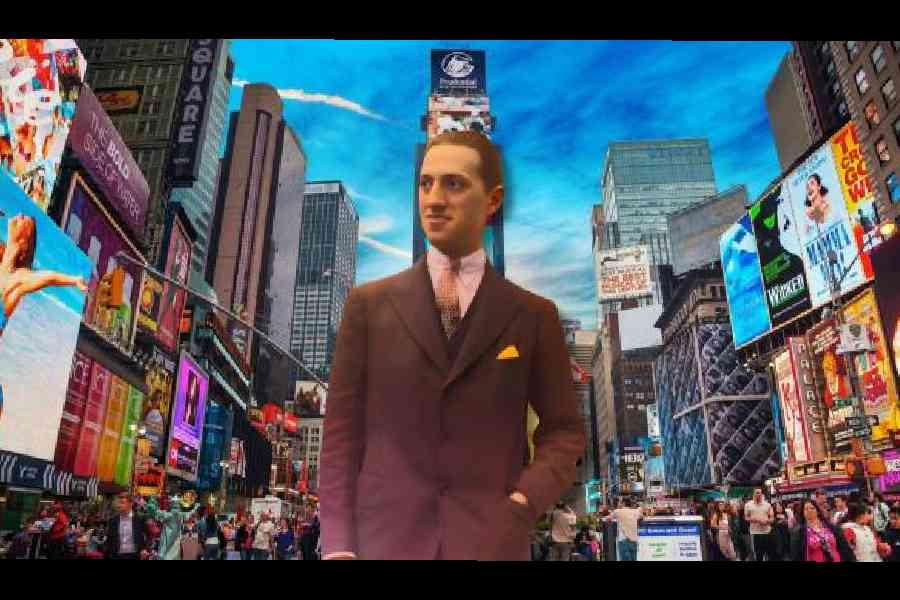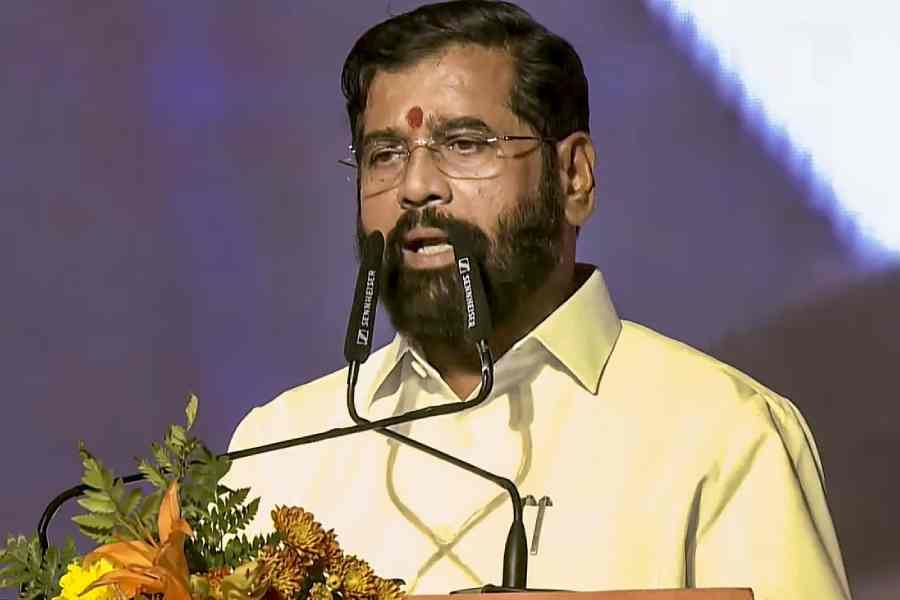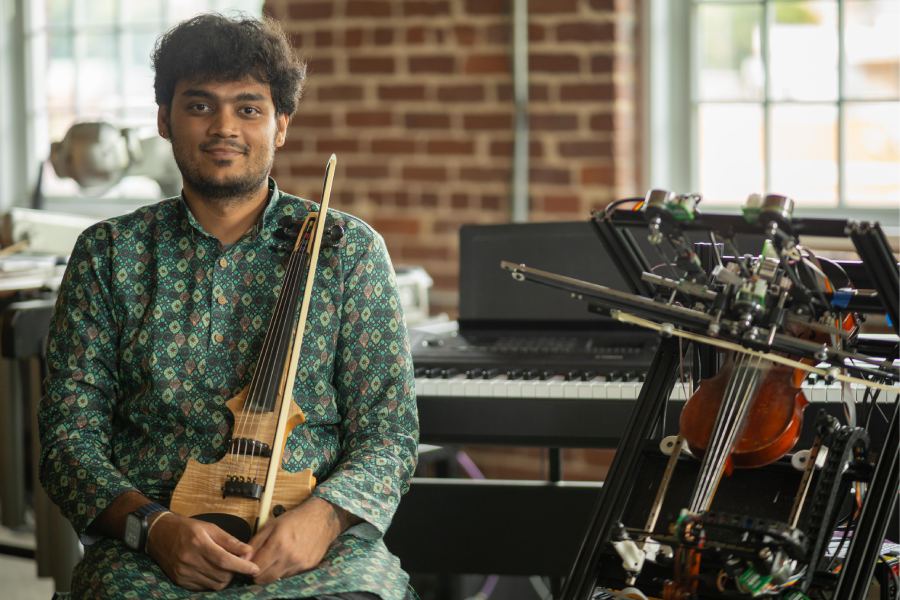In New York, it wouldn’t be unusual to smell roses, freshly-baked bagels, construction dust and bus fumes all in a span of a few minutes. The great American composer and pianist George Gershwin — who died at the age of 38 in 1937 — knew the power of sniffing, rather than just breathing, in order to get the maximum impact. And he heard music in the noise of the city. Everything combined, it inspired the great American piece, which lingers even a century later and will continue to play long after Donald Trump is done with his second stab at the presidential throne.
Gershwin’s masterpiece Rhapsody in Blue is 100 years old but it continues to defy boundaries. Any true music enthusiast walking the streets of Calcutta knows this piece as much as a New Yorker.
It has cross-genre and cross-cultural appeal. It is like New York (and probably Calcutta, London or Tokyo) — sophisticated and brash. This was the first truly melting pot piece for a melting pot city called New York but since its 1924 debut, the musical composition has reached the shores of every big city beyond the US. There’s a reason that Woody Allen chose Rhapsody in Blue to open his 1979 film Manhattan. There’s something about this music that has woven its way into the hearts of listeners ever since it was first performed in a concert given by jazz band leader Paul Whiteman in New York.
American rhapsody
Gershwin was only 25 when he was literally forced to come up with the piece. A hundred years later, it continues to be played in Carnegie Hall to the Hollywood Bowl.
In January 1924, George Gershwin was playing pool with a friend at the Ambassador Billiard Parlor at Broadway and 52nd Street in Manhattan. George’s brother, Ira, came in carrying an early edition of the following day’s New-York Tribune. In it, the band leader Paul Whiteman had announced a concert in just six weeks’ time and in it, the article stated, would be a new piece by George Gershwin. This was news not only to Ira but also to George himself.
Why would Whiteman do something like this? His musical nemesis, Vincent Lopez, was about to announce his own concert series of jazz-influenced music and Whiteman felt that he didn’t want to be scooped by his rival, so he just went ahead and announced the concert and including Gershwin was the surest way to make sure that the press release was covered prominently in the papers.
Finally, Gershwin agreed, hoping he could work on the piece on the train between New York and Boston where he had a new musical. Gershwin reportedly said that he heard music in the heart of noises — the sounds and rhythm of the train, cars clickety-clacking down the rails inspired parts of the score. He said he imagined this piece as a musical kaleidoscope of America.
In fact, he had planned to call the piece ‘American Rhapsody’ but his brother suggested Rhapsody in Blue after visiting an art gallery where some of the artists had included various colours in the titles of their paintings.
The night American music changed
Gershwin finished the piece in about three weeks. Arranger Ferde Grofe hastily adapted it for Whitemen’s jazz band. New York’s Aeolian Concert Hall was hot and the concert was long.
Rhapsody in Blue was the 25th piece out of 26 but just as audience members were starting to leave, this handsome guy with jet-black hair confidently walked up to the piano, sat down and started playing.
The work was premiered in a concert billed ‘An Experiment in Modern Music’. Since Gershwin’s name was attached to the concert, many of the most important musicians of the day were there — John Philip Sousa, Victor Herbert, Walter Damrosch, Fritz Kreisler and Igor Stravinsky.
The audience loved Rhapsody in Blue even though all critics were not convinced. Many thought it was sort of a stunt. You couldn’t dance to it because it had all these different tempo changes. It’s not a classical piece, it’s not a jazz piece. It’s almost like a big improvisation. He just came up with beautiful themes and then he put them together. You could probably hum along with those themes.
The music pointed towards a possible merging of the classical with more popular idioms, which many said couldn’t be done. Gershwin’s central dilemma when writing the piece was how to turn his propensity for writing a good tune into a more substantial piece of music.

Vincent Lopez (left) and Paul Whitman
Gershwin improvised large sections of his solo piano passages which he would later write down but the effect on the audience was unmistakable — there was loud applause for the Rhapsody and the audience went away proclaiming the concert was a complete knockout, which can be a bit strange since no other music from this experiment has lived on in any comparable way but that night the history of American music changed.
Now, each time you see a scene with the New York skyline, you hear somebody copying Rhapsody in Blue. He created a sound that is the essence of New York. Millions of people know Rhapsody in Blue not from the concert hall but from the United Airlines ads.
This was the man who dared to begin a serious orchestral work with the wail of a clarinet. He was a White composer of the memorable Black folk opera, Porgy and Bess. He was the writer of some of the most romantic songs on Broadway and in Hollywood in the 1920s and 1930s. Be it Elton John or Sting, musicians continue to record his tunes. “Many groups of today will say that they wouldn’t have existed without the Beatles. Well, the Beatles couldn’t have existed without the Gershwins,” wrote George Martin, a record producer.
Leonard Bernstein, who saw Gershwin as his idol, said: “I find that the themes, or tunes, or whatever you want to call them, in the Rhapsody are terrific — inspired, God-given. I don’t think there has been such an inspired melodist on this Earth since Tchaikovsky, if you want to know what I really feel. I rank him right up there with Schubert and the great ones.”
In 2020, the copyright on Rhapsody in Blue expired, so for the next 100 years and beyond it belongs to us all.











